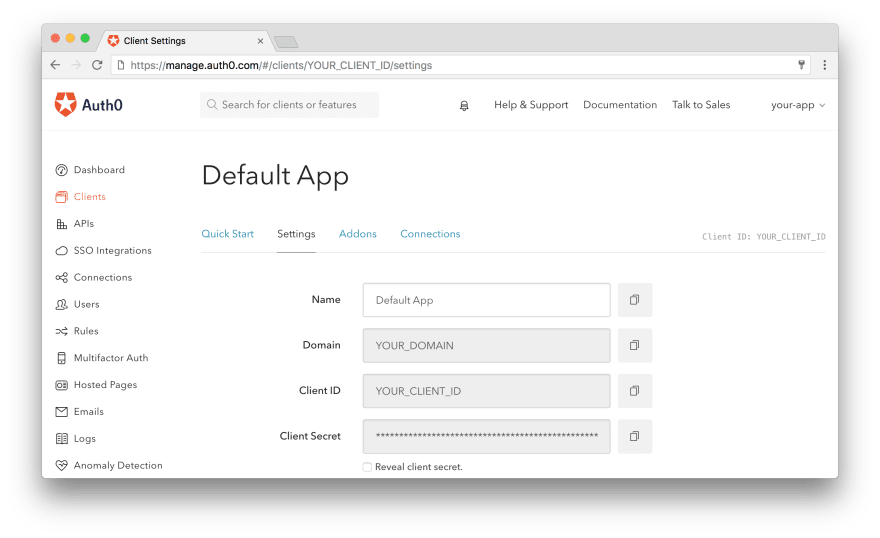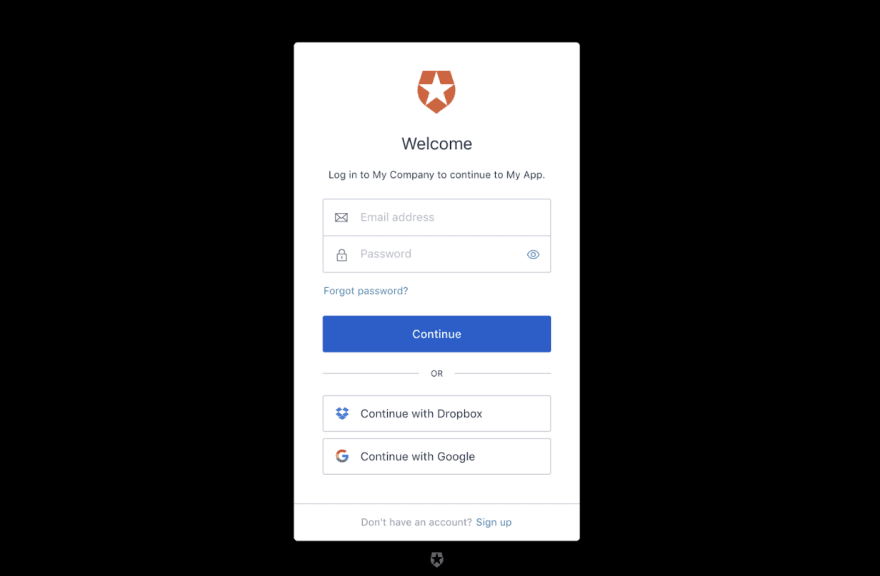This content originally appeared on DEV Community and was authored by Muhammad Awais
The focal point of this aide is to assist engineers with figuring out how to get an Angular application by executing client verification. You'll improve an Angular starter application to rehearse the accompanying security ideas:
- Configure Auth0
- Install the Auth0 Angular SDK
- Add Login to Your Application
- Add Logout to Your Application
- Show User Profile Information
1. Configure Auth0
At the point when you pursued Auth0, another application was made for you, or you might have made another one. You will require a few insights concerning that application to speak with Auth0. You can get these subtleties from the "Application Settings" area in the Auth0 dashboard.
Don't forget to Configure Callback URLs, Configure Logout URLs, Configure Allowed Web Origins to:
http://localhost:4200 (Angular local environment with port)
2. Install the Auth0 Angular SDK
Run the accompanying order inside your undertaking registry to introduce the Auth0 Angular SDK:
npm install @auth0/auth0-angular
Register and configure the authentication module
// environment.ts
export const environment = {
production: false,
auth: {
domain: 'YOUR_DOMAIN',
clientId: 'YOUR_CLIENT_ID'
}
};
// app.module.ts
import { BrowserModule } from '@angular/platform-browser';
import { NgModule } from '@angular/core';
import { AppComponent } from './app.component';
// Import the module from the SDK
import { AuthModule } from '@auth0/auth0-angular';
import { environment } from 'src/environments/environment';
@NgModule({
declarations: [AppComponent],
imports: [
BrowserModule,
// Import the module into the application, with configuration
AuthModule.forRoot(environment.auth)
],
bootstrap: [AppComponent],
})
export class AppModule {}
3,4. Add Login/Logout to Your Application
Import the AuthService type from the SDK, and to create a login button using the loginWithRedirect() & logout() methods from the AuthService service class.
import { Component, OnInit } from '@angular/core';
// Import the AuthService type from the SDK
import { AuthService } from '@auth0/auth0-angular';
@Component({
selector: 'app-header',
templateUrl: './header.component.html',
styleUrls: ['./header.component.scss']
})
export class HeaderComponent implements OnInit {
// Inject the authentication service into your component through the constructor
constructor(public auth: AuthService) {}
ngOnInit(): void {
}
}
<header>
<h3>Auth0 Angular</h3>
<div *ngIf="auth.isAuthenticated$ | async; else loggedOut">
<button (click)="auth.logout()">
Log out
</button>
</div>
<ng-template #loggedOut>
<button (click)="auth.loginWithRedirect()">Log in</button>
</ng-template>
</header>
5. Show User Profile Information
The Auth0 Angular SDK assists you with recovering the profile data related with signed in clients rapidly in whatever part you need, for example, their name or profile picture. The profile data is accessible through the user$ detectable uncovered by the AuthService administration, you have to import the AuthService in the component as we seen above in header.component.ts and get data in html file of the component.
<div *ngIf="auth.user$ | async as user">
<h2>Welcome</h2>
<p>{{ user.email }}</p>
</div>
Github Source:
https://github.com/muhammadawaisshaikh/angular-auth0
This content originally appeared on DEV Community and was authored by Muhammad Awais
Muhammad Awais | Sciencx (2021-07-04T13:55:27+00:00) User Authentication in Angular App using Auth0. Retrieved from https://www.scien.cx/2021/07/04/user-authentication-in-angular-app-using-auth0/
Please log in to upload a file.
There are no updates yet.
Click the Upload button above to add an update.



